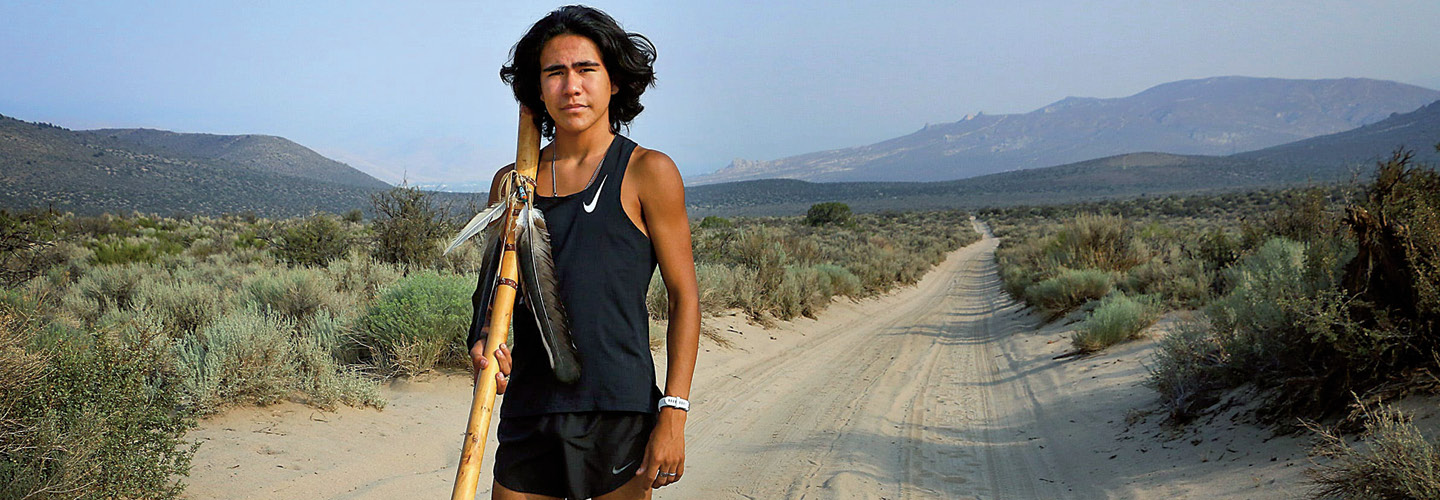The teenager ran toward the rising sun. His feet dug into the gravel trail, his legs burned with pain, and he fought doubt. He ran on. A pair of straggling spectators crossed his path, and he swerved to avoid them, nearly losing his balance.
The 5-kilometer race’s trail climbed into the Reno, Nevada, foothills. Ku Stevens had no teammates, and his competitors had fallen far back. There was no one to push him toward the time he needed to be the best. But he ran on.
A senior at Yerington High School in western Nevada, Stevens—whose full first name is Kutoven—raced in the Nevada state interscholastic championships in early November. He lived on a struggling Native American reservation and participated in a sport where few competitors shared his background. Yet he dreamed for years of being the state’s fastest high school distance runner. He wanted to show that Native Americans could be champions.
The teenager ran toward the rising sun. His feet dug into the gravel trail and his legs burned with pain. Still, he fought doubt and ran on. A pair of straggling spectators crossed his path. As he swerved to avoid them, he almost lost his balance.
The 5-kilometer race’s trail climbed into the Reno, Nevada, foothills. Ku Stevens had no teammates, and his competitors had fallen far back. There was no one to push him toward the time he needed to be the best. But he ran on.
It was a big moment for Stevens, a senior at Yerington High School in western Nevada. The race, the Nevada state interscholastic championships, took place in early November. He lived on a struggling Native American reservation. Few of his competitors shared his background. Yet he dreamed for years of being the state’s fastest high school distance runner. Stevens, whose full first name is Kutoven, wanted to show that Native Americans could be champions.

